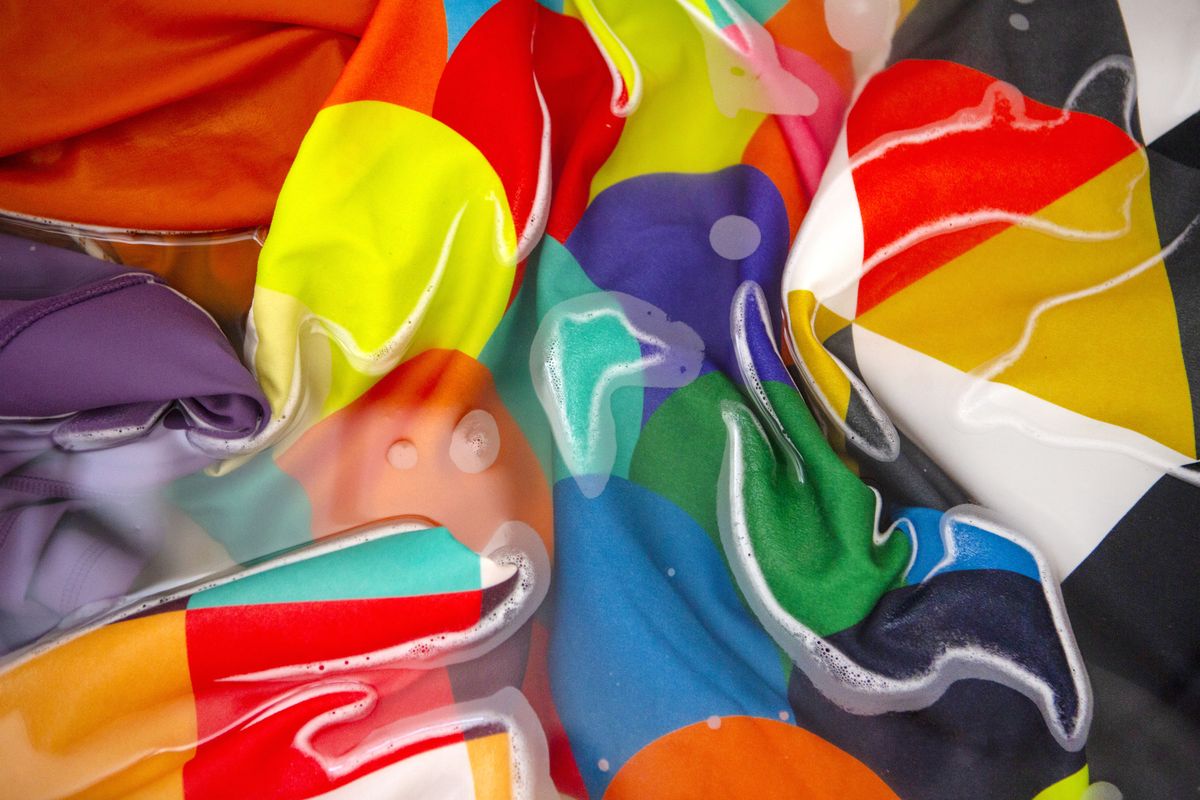What is laundry stripping, and does it work?

A few years ago, Lisa Myers, owner of the lifestyle store Capers Home in Seattle, had a house guest who took special notice of a pile of old, worn-out and discolored sheets and towels that Myers had set aside for the rag bag.
The guest soaked the linens in hot water and a cleaning solution with a promise to revive them. “She was able to remove discoloration, rust, grease spots,” Myers says. “I had my collection of linens back in fabulous condition.”
Myers’s guest, it turned out, had stripped the linens to restore them to a more presentable state – before TikTok had made the practice a pandemic sensation.
A quick search shows that #laundrystripping videos have been viewed more than 120 million times on the app, where users have shared tub after tub of brown water left behind after deep-cleaning dog blankets, bathroom rugs, pillows, shoes, couch-cushion covers and more.
What is laundry stripping?
But how does it work? “Laundry stripping is a soaking process where you’re removing the built-up residue: excess laundry detergent, fabric softener, body oils, hard-water minerals,” says Lexie Sachs, textiles director at the Good Housekeeping Institute. “It’s something you do on towels that are already clean, not dirty.”
Although many swear by this extreme method of linen cleaning, Sammy Wang, a senior fabric care scientist at Procter & Gamble, is more cautious. A satisfyingly dark tub of water in a social media “reveal” is not just a buildup of dirt, he says.
It can include dye from the fabrics and even fibers lost during stripping. Also, Wang says, the washing soda used in stripping can combine with deposits in hard water to create additional residue on fabrics.
Wang advises not trying laundry stripping on delicate garments and fabrics, “or those that you are worried about fading and shrinking.”
Also beware of doing it on noncolorfast items, anything that can’t take hot water and on fabrics with natural fibers that could be weakened by the process. He says, in experiments in the lab, regular washing with a good detergent is sufficient.
When – and how – to do it
Sachs agrees with Wang that laundry stripping isn’t necessary if you’ve been keeping items clean all along. But there are times when it can be useful.
“When you would want to laundry strip is if there’s excess buildup of laundry detergent,” Sachs says, adding that this can happen with homemade cleaners or if you’re not using enough detergent, and soil builds up on the fabric.
At most, laundry stripping should only be done once or twice a year, such as when white towels and sheets start to yellow or colored linens start to flake, indicating a buildup of dirt and laundry detergent.
Sachs says to fill a bathtub with hot water and add a quarter cup of borax, a quarter cup of washing soda (aka sodium carbonate) and a half cup of detergent.
Soak clean towels until the water cools (at least an hour), stirring occasionally. Then run the linens through the rinse cycle in a washer and dry them. Make sure to do this separately for lights and darks.
To boost the process (if desired), Marilee Nelson, co-founder of Branch Basics, says to add an optional one to two small boxes of baking soda (especially if you have hard water) to soften and deodorize fabrics.
You can also add more borax – up to a cup – if the laundry is “moldy or musty.” Some people experience irritation from borax, so double rinsing the linens might also be necessary.
And to keep your fabrics looking fresh, follow Sachs’s best laundry practices: Clean your sheets and towels once a week or every other week; use store-bought detergents (Tide is a favorite at Good Housekeeping); and read and follow detergent directions.
Don’t overload the washer, and try to use warm water. “There are some detergents that work in cold water, but really, the warmer the water, the better it’s going to clean,” Sachs says. Watch how much fabric softener you use, too. “At most, every three to four washes is plenty” for adding softener, Sachs says.
Hang towels to dry on rods, not hooks, because bacteria buildup starts when linens aren’t dried properly. “Once that bacteria forms, it doesn’t go away easily,” Sachs says. Rods have more surface area and expose towels to more of the air around them.
“Don’t drop wet towels in a heap on the floor,” Nelson says. And whatever you do, make sure to take a video to post on social media. Laundry is trendy.